Behind the Curtains of Kanazawas Kaiseki Cuisine
Next to Kanazawa’s major attractions, Kenrokuen and Kanazawa Castle, there are several restaurants and cafes, which offer locals and tourists from all over the world refreshing beverages, delicious meals, and a place to rest after a long day in the historic city. One of these restaurants is Kenjotei, which serves high-class kaiseki-style dinners, representing some of the best food that Kanazawa cuisine, renowned for its fresh fish and other seasonal ingredients, has to offer.
Creating these vivid and playfully arranged dishes, iconic for Kanazawa cuisine as for Japanese cuisine in general, requires long training and a lot of artistic talent. While this is apparent in the dishes themselves, in order to highlight the craftsmen behind the curtains we interviewed Akinori Nakano, the young head chef at Kenjotei, to ask him about himself and the intricacies and philosophy of his craft.
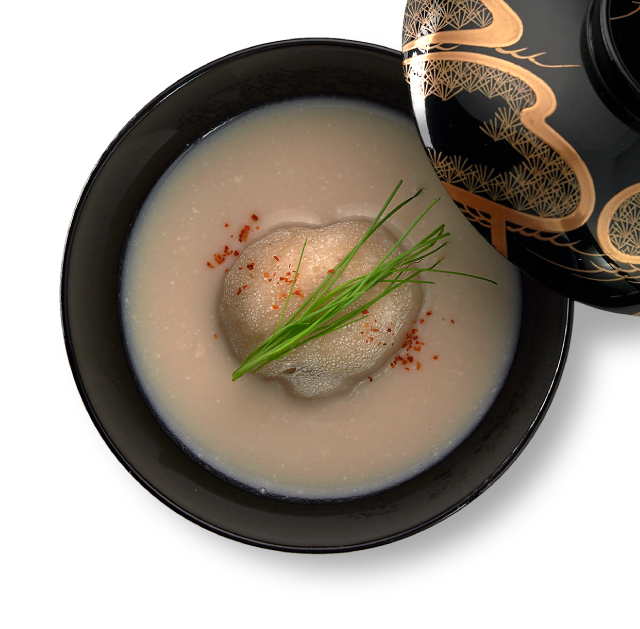
Behind the Curtains of Kanazawas Kaiseki Cuisine
Next to Kanazawa’s major attractions, Kenrokuen and Kanazawa Castle, there are several restaurants and cafes, which offer locals and tourists from all over the world refreshing beverages, delicious meals, and a place to rest after a long day in the historic city. One of these restaurants is Kenjotei, which serves high-class kaiseki-style dinners, representing some of the best food that Kanazawa cuisine, renowned for its fresh fish and other seasonal ingredients, has to offer.
Creating these vivid and playfully arranged dishes, iconic for Kanazawa cuisine as for Japanese cuisine in general, requires long training and a lot of artistic talent. While this is apparent in the dishes themselves, in order to highlight the craftsmen behind the curtains we interviewed Akinori Nakano, the young head chef at Kenjotei, to ask him about himself and the intricacies and philosophy of his craft.
1
Nakano-san, please tell us a little bit about how and why you became a chef.
From early on I really liked cooking and when the time came for me to decide what to do in the future, I decided early on to become a chef instead of aiming for a job in a big firm. This of course would also have been a valid option to make a living, but my life would have become very simple and uneventful, something that didn’t quite appeal to me. So, I chose to follow my interest and after attending and graduating from a cooking school in Osaka, after which I went to Kanazawa and started an apprenticeship at a well-known traditional ryotei, Zeniya. Here I learned the practical side of things and got more familiar with the work as it is as well as the intricacies and know-how of Kaiseki cuisine. This knowledge also came in handy when I worked as a sous chef at a Japanese restaurant in Shanghai and back home in Osaka. Finally the opportunity came for me to work here at Kenjotei and that’s how I came back to Kanazawa. Overall, being able to entertain and make the guests at the restaurant enjoy themselves with the meals you are cooking became a strong motivation, growing my initial enthusiasm for cooking into calling over the years.

1
Nakano-san, please tell us a little bit about how and why you became a chef.
From early on I really liked cooking and when the time came for me to decide what to do in the future, I decided early on to become a chef instead of aiming for a job in a big firm. This of course would also have been a valid option to make a living, but my life would have become very simple and uneventful, something that didn’t quite appeal to me. So, I chose to follow my interest and after attending and graduating from a cooking school in Osaka, after which I went to Kanazawa and started an apprenticeship at a well-known traditional ryotei, Zeniya. Here I learned the practical side of things and got more familiar with the work as it is as well as the intricacies and know-how of Kaiseki cuisine. This knowledge also came in handy when I worked as a sous chef at a Japanese restaurant in Shanghai and back home in Osaka. Finally the opportunity came for me to work here at Kenjotei and that’s how I came back to Kanazawa. Overall, being able to entertain and make the guests at the restaurant enjoy themselves with the meals you are cooking became a strong motivation, growing my initial enthusiasm for cooking into calling over the years.
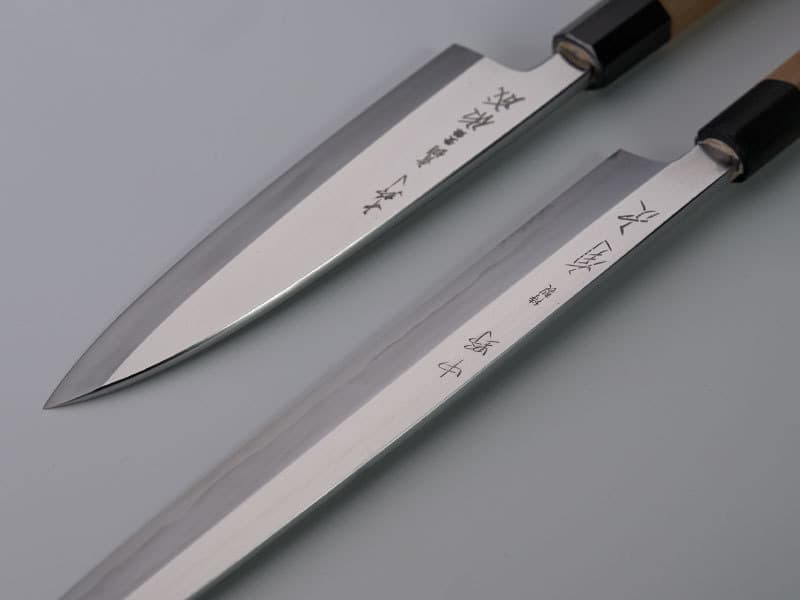
2
Your dishes’ taste and presentation really stand out. How do you choose tableware fitting the plating and the meals themselves?
When it comes to presentation and tableware there are many things to consider, like the season, the ingredients available, the guests age, gender, preferences, etc., the occasion of their visit and many more. Here I am always talking to the proprietress to ensure that I cook the best dishes possible for the guests coming that day. This finetuning makes Kaiseki cuisine very challenging, but also allows you to be very creative and flexible. In preparing the meals there of course are basics that you have to adhere to, but the guests experience, and enjoyment comes first and plating everything the same way every time also becomes boring for both us in the kitchen and the guest who come more frequently. Here Kaiseki is not unlike French cuisine in that variation and playfulness is encouraged. Also, just like in any field there is no real right way in cooking and presenting the meals. Every chef has their own way of doing things and to express themselves. When it comes to the dishes and the tableware itself, I always aim to convey both the seasonality through the best ingredients and the appropriate forms of tableware. In summer there might be more glass plates and urushi lacquer bowls with fitting designs in Kaga maki-e which give off a cool image, while in autumn and winter I use more earthenware which have a warmer feeling to them. Here I want the guests to experience both the beauty and the skill put into these pieces of tableware by the craftsmen that made them as well as giving the guests the opportunity to see as many interesting items as possible by utilizing many of them during one course.
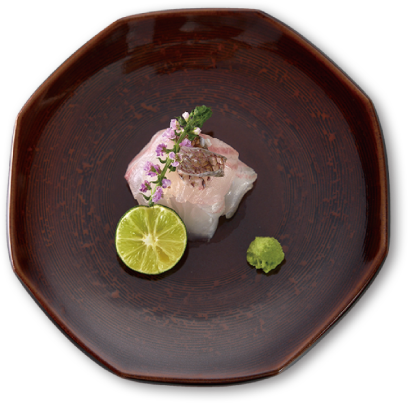
2
Your dishes’ taste and presentation really stand out. How do you choose tableware fitting the plating and the meals themselves?
When it comes to presentation and tableware there are many things to consider, like the season, the ingredients available, the guests age, gender, preferences, etc., the occasion of their visit and many more. Here I am always talking to the proprietress to ensure that I cook the best dishes possible for the guests coming that day. This finetuning makes Kaiseki cuisine very challenging, but also allows you to be very creative and flexible. In preparing the meals there of course are basics that you have to adhere to, but the guests experience, and enjoyment comes first and plating everything the same way every time also becomes boring for both us in the kitchen and the guest who come more frequently. Here Kaiseki is not unlike French cuisine in that variation and playfulness is encouraged. Also, just like in any field there is no real right way in cooking and presenting the meals. Every chef has their own way of doing things and to express themselves. When it comes to the dishes and the tableware itself, I always aim to convey both the seasonality through the best ingredients and the appropriate forms of tableware. In summer there might be more glass plates and urushi lacquer bowls with fitting designs in Kaga maki-e which give off a cool image, while in autumn and winter I use more earthenware which have a warmer feeling to them. Here I want the guests to experience both the beauty and the skill put into these pieces of tableware by the craftsmen that made them as well as giving the guests the opportunity to see as many interesting items as possible by utilizing many of them during one course.

3
Kanazawa’s culture, with its traditional arts and crafts, is often considered special even in Japan itself; does this also apply to its cuisine?
Kanazawa’s Kaga cuisine is one of Japan’s most well-known Kaiseki styles! Traditional culture and crafts also play a big role in it like the seasonality expressed in the ingredients and the use of local crafts like Wajima lacquerware, Ohi pottery and so on for tableware mentioned before. When it comes to cooking and preparation in general, I think Kanazawas Kaiseki chefs don’t stray too far from others around the country. The core tenets that you have to internalize and that I learned are to do everything properly and consider the guests experience as the most important thing. Those are easier to forget than one might think when getting used to working after the learning period and behind closed doors in the kitchen. It is here that the offer that Kenjotei started during the pandemic in which we come to the guests houses and prepare everything in front of them became a great reminder of and opportunity to finetune the skills one takes for granted and internalized maybe a bit too much over the years. In front of the guests, one shows things not normally seen and of course one gets a little bit nervous when being watched. I consider this nervousness as very helpful thought because, as said before, one puts even more effort into preparing the meal properly and beautifully compared to the kitchen that is out of sight. Overall presenting ones craft in front of spectators is very fun and hearing that the meals you created were beautiful and delicious becomes even more worth it.
3
Kanazawa’s culture, with its traditional arts and crafts, is often considered special even in Japan itself; does this also apply to its cuisine?
Kanazawa’s Kaga cuisine is one of Japan’s most well-known Kaiseki styles! Traditional culture and crafts also play a big role in it like the seasonality expressed in the ingredients and the use of local crafts like Wajima lacquerware, Ohi pottery and so on for tableware mentioned before. When it comes to cooking and preparation in general, I think Kanazawas Kaiseki chefs don’t stray too far from others around the country. The core tenets that you have to internalize and that I learned are to do everything properly and consider the guests experience as the most important thing. Those are easier to forget than one might think when getting used to working after the learning period and behind closed doors in the kitchen. It is here that the offer that Kenjotei started during the pandemic in which we come to the guests houses and prepare everything in front of them became a great reminder of and opportunity to finetune the skills one takes for granted and internalized maybe a bit too much over the years. In front of the guests, one shows things not normally seen and of course one gets a little bit nervous when being watched. I consider this nervousness as very helpful thought because, as said before, one puts even more effort into preparing the meal properly and beautifully compared to the kitchen that is out of sight. Overall presenting ones craft in front of spectators is very fun and hearing that the meals you created were beautiful and delicious becomes even more worth it.
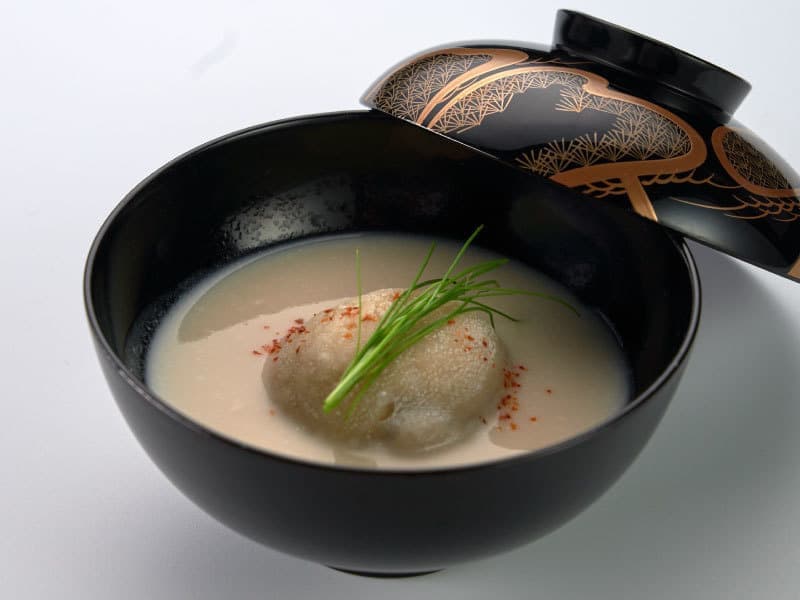
4
As a final point, is there anything you want guests to know when eating Kaiseki?
This is a very difficult question to answer! Japanese cuisine is very much about the space and the feeling of it, the restaurants interior decoration like flowers etc. are also important and one wants them to be noticed and appreciated, but it is also ok if the guests don´t. It might be better to think about it in the way that you are lucky if you find a hidden detail, but you don’t have to, to enjoy your time. If you point out and explain too much from your side, that also comes in the way of the guests enjoyment. Making them enjoy their time and the moment itself with meals prepared in the best possible way is the most important thing and for me, receiving a simple compliment on the meal the best reward.
Talking about what cooking means to me, it definitely makes my life more exciting. If I didn’t decide to become a chef, I probably would have gone a more obvious, straight forward route in life, simply trying to rise on the corporate ladder and such. Here the decision to pursue my interest in cooking and make it my calling certainty brought some unexpected hurdles with it that wouldn’t have occurred otherwise, but these twists and turns are what allowed me to make a lot of good experiences doing a proper apprenticeship and going abroad, working with many different chefs in many different environments. This path certainly isn’t easy, but all the effort brought the spice into my life and make being a chef worthwhile. What I want people to know is that working as a chef in Japan certainly has a strict image, with intense training, but the environment is changing for the better and if one has passion everyone can do it and have fun while cooking for a living. I also failed in preparing a lot of dishes, but even if you fail and make mistakes the first, second and third time, when you accomplish your task at the fourth all these mistakes become valuable lessons and add to both your experience and the overall fun in this line of work. That is the image I want to spread to the public and especially to young people dreaming about working in this field.
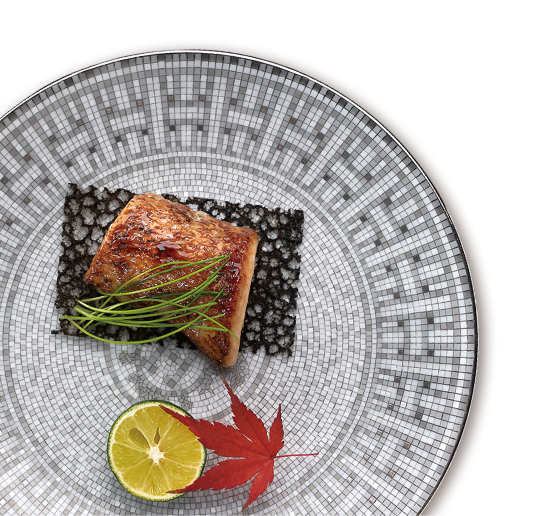
4
As a final point, is there anything you want guests to know when eating Kaiseki?
This is a very difficult question to answer! Japanese cuisine is very much about the space and the feeling of it, the restaurants interior decoration like flowers etc. are also important and one wants them to be noticed and appreciated, but it is also ok if the guests don´t. It might be better to think about it in the way that you are lucky if you find a hidden detail, but you don’t have to, to enjoy your time. If you point out and explain too much from your side, that also comes in the way of the guests enjoyment. Making them enjoy their time and the moment itself with meals prepared in the best possible way is the most important thing and for me, receiving a simple compliment on the meal the best reward.
Talking about what cooking means to me, it definitely makes my life more exciting. If I didn’t decide to become a chef, I probably would have gone a more obvious, straight forward route in life, simply trying to rise on the corporate ladder and such. Here the decision to pursue my interest in cooking and make it my calling certainty brought some unexpected hurdles with it that wouldn’t have occurred otherwise, but these twists and turns are what allowed me to make a lot of good experiences doing a proper apprenticeship and going abroad, working with many different chefs in many different environments. This path certainly isn’t easy, but all the effort brought the spice into my life and make being a chef worthwhile. What I want people to know is that working as a chef in Japan certainly has a strict image, with intense training, but the environment is changing for the better and if one has passion everyone can do it and have fun while cooking for a living. I also failed in preparing a lot of dishes, but even if you fail and make mistakes the first, second and third time, when you accomplish your task at the fourth all these mistakes become valuable lessons and add to both your experience and the overall fun in this line of work. That is the image I want to spread to the public and especially to young people dreaming about working in this field.
Kenrokuen chaya Kenjotei
Kenjotei was established in 1913 and renovated in cooperation with renowned architect Kuma Kengo in 2019. In the building, recreated with modern yet classic interior design, visitors can enjoy not only one of the best views of Kanazawa castle but also taste the best high-class kaiseki-style dinners.

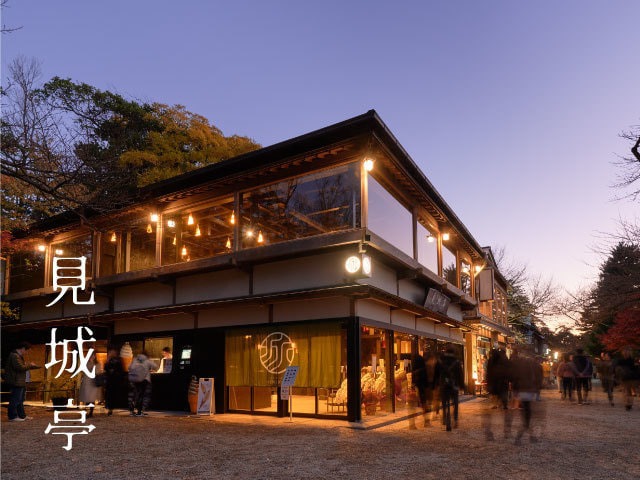
Kenrokuen chaya Kenjotei
1-19, Kenrokumachi, Kanazawa, Ishikawa 920-0936 / Phone 076-222-1600
HOURS: lunch 11:00 – 15:00
*Reservation is needed for dinner time; closed Wednesdays
https://www.kenrokuen.jp














